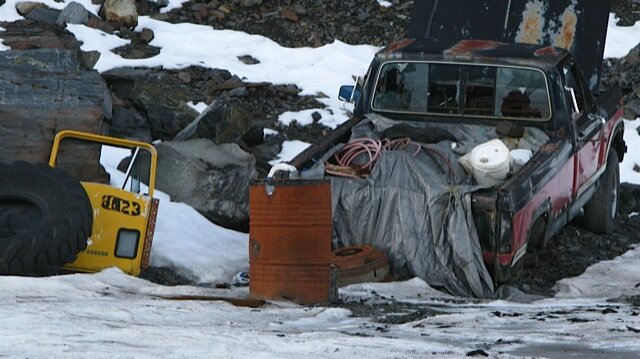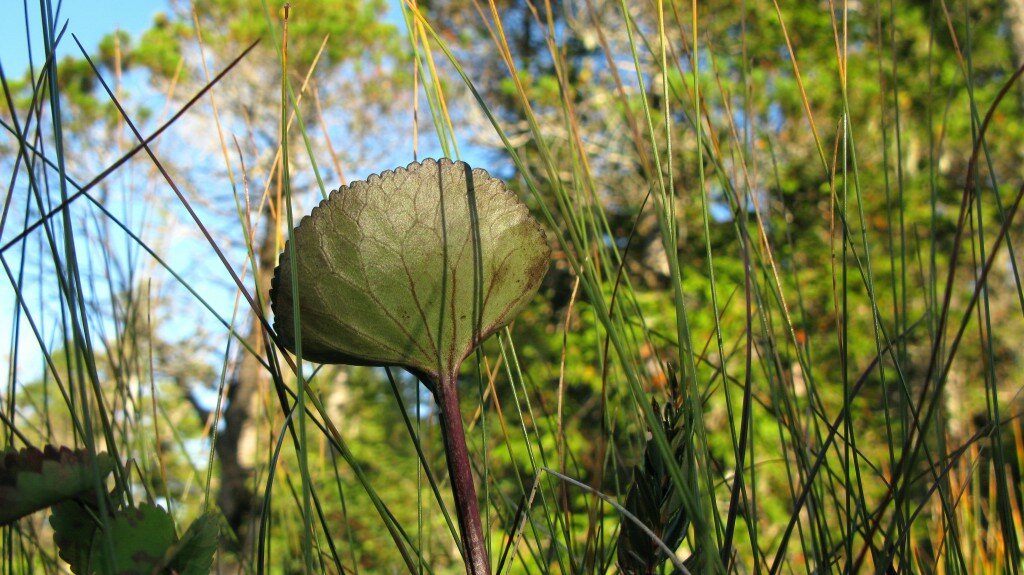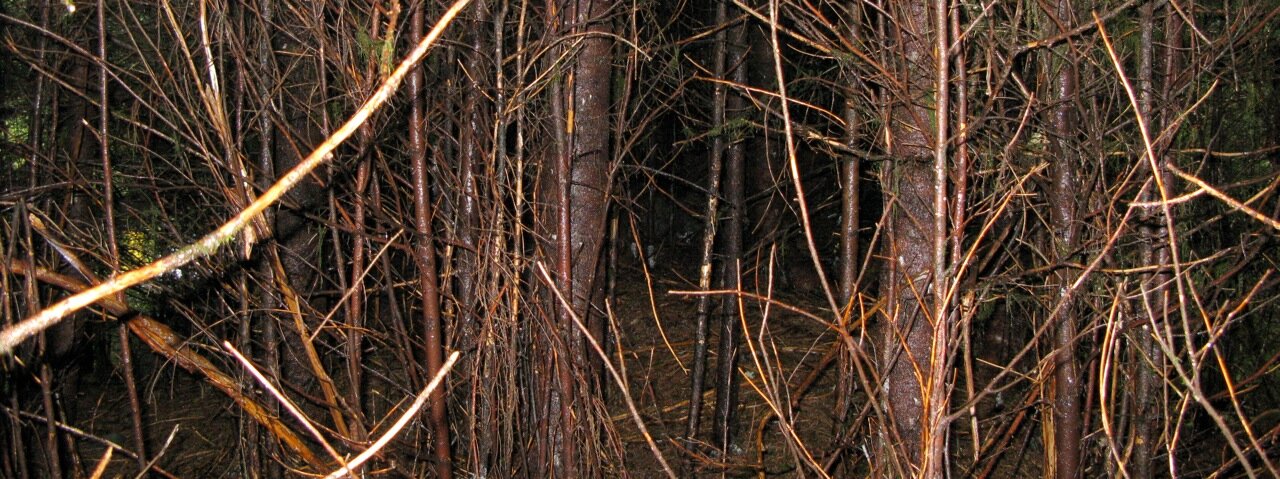Overview: The Tonka Timber Sale Draft Environmental Impact Statement (DEIS) was released to the public in early November 2011 by the US Forest Service (USFS) Petersburg Ranger District. This document describes the “Purpose and Need” for offering to the highest bidder, between 25 and 53 million board feet of old-growth forest from the Lindenberg Peninsula of Kupreanof Island. This logging is proposed even though the bid price for two of the three alternatives would be “below cost”– wouldn’t cover the cost of preparing and executing the sale — while the third would barely break-even. The Tonka Project would be conducted as one large sale largely by clearcutting, euphemistically referred to as “even-aged management.” Clearcutting is the most damaging of logging methods for impacting a wide range of old-growth dependent wildlife species.
This timber sale will be adding to the impacts of 30 years of industrial logging in the area.
The DEIS claims, in return, anywhere between 116 to 247 full time equivalent jobs would be provided. But since fifty percent or more of the timber from the Tonka Timber Sale can be exported as unmilled round logs in this timber sale, it is unclear where those jobs would occur — here or Washington state — or in China. Two recent Tongass timber sales have allowed up to 100% export, even though that was not considered in the Environmental Impact Statements of those timber sales. The export of logs and jobs should be expected here too.
Of the three action alternatives, the DEIS expects only Alternative 4 (the agency’s Preferred Alternative) to generate a net revenue — but just $30,000 from the sale of 40 million board feet (mmbf) of timber. Alternatives 2 and 3 would target 53 and 25 mmbf respectively, at a loss to the US taxpayers. Alternative 3, by far the biggest money loser, would result in the most harmful environmental impacts. GSACC believes all three action alternatives are unacceptable, in view of their anticipated environmental impacts, and the history of impacts incurred by past logging in the area. (Alternative 1 is the required “No Action Alternative,” an option unfortunately rarely exercised by the Forest Service, and chiefly used for comparison purposes.)
Of significant consequence to the commercial Dungeness crab fishing fleet, is the USFS application to the State of Alaska for a log storage permit in an area known as, “The Pothole” — which has been designated by the state in an Area Plan for management priorities of crab harvest and crab habitat. This permit application is in direct contradiction to these Area Plan designations. In-water log storage is known to degrade productive marine habitats like the Pothole with extensive shallow waters adjacent to salmon streams and insufficient currents to disperse toxic bark accumulations on the sea bottom. Allowing harmful in-water log storage shifts logging transportation costs to commercial crab fishermen and imposes greater crab fishing fleet concentration within increasingly diminishing areas for Dungeness crab harvest.

Rock pit junkyard, Tonka Road System, Kupreanof Island
Cumulative Impacts
Previous timber sales on the Lindenberg Peninsula have eliminated over 5000 acres of pristine old-growth rainforest there. In its place are thousands of acres of low elevation clearcuts, 60 miles of logging roads, and several rock pits from which the roads were built. The rock pit (pictured above) located closest to the Tonka Log Transfer Facility is now a junkyard of abandoned, mostly out of state vehicles, and derelict logging equipment requiring cleanup of the associated toxic contamination of the area. In addition, the DEIS discloses the “proposed action” would add over 3000 acres of clearcuts to the 5000 acres previously cut.
Logging roads access the clearcuts, and more will be built for the Tonka project. A high density of roads across the landscape can lead to an excessive legal and illegal take of wildlife. This is especially a concern regarding the Alexander Archipelago wolf, for which research shows that road density (measured in linear miles per square mile) below 1200 feet elevation is an important determinant of viability. The Tonka DEIS, however, analyzed road density at 1500 ft. and below in calculating for the sustainability of the wolf population. This error added an extensive swath of land that has few roads and added a 300 ft. band of forest which snakes throughout the Tonka project area. This conceals the true cumulative impact of the project by adding to the road density calculation. In comments on the DEIS, GSACC challenged this fundamental error (as did the Alaska Dept. of Fish & Game). When the error is corrected in the Final Environmental Impact Statement (FEIS), a significantly higher road density calculation will result, showing road density exceeds the danger level for wolves, instead of falling just below it as the DEIS indicates.
High road densities and loss of deer winter habitat are among the greatest concerns of Alaska Department of Fish and Game (ADFG) which manages the project area as WAA 5138 (Wildlife Analysis Area). These concerns are shared by local subsistence hunters who value the area’s proximity and weather protected access to nearby communities of Petersburg and Kupreanof. ADFG reports WAA 5138 saw a peak deer harvest in 2004 of 158 deer, but the 2009 deer harvest dropped to just 24 deer. There are several factors to consider in this decline in hunter success. First, natural variation in deer populations occurs even in the best of circumstances. That dynamic intensifies when the significant loss of winter habitat due to past intensive logging comes into play during hard winters. Also, habitat fragmentation from logging allows predators such as wolves and bears to be more efficient and this can suppress the deer population. Finally, as more logging roads are built, the unreported harvest from increased poaching can make ADFG’s deer management more difficult. For wolves, northern goshawks, deer and other old growth-dependent species such as marten, the impacts of logging and logging roads can have enduring consequences.

Sitka blacktail deer in winter (Odocoileus hemionus sitkensis)
Enduring Consequences
Heavy snowfall events (such as the winter of 2006/2007) drive deer into low elevation forest and beach fringe where many perish due to the high energy demands of traveling in deep snow, a lack of adequate winter habitat providing browse, and increased vulnerability to predation. The stands of bigger old-growth trees on south and west facing slopes at elevations below 800 ft. offer the best forest structure for deer winter refuge. When the timber industry calls for “economic” timber sales it seeks those same areas for the ease of access to the low elevation, higher volume stands of old-growth timber. The many layered canopy of big trees (old growth) holds more snow off the forest floor — where deer get their food, in the form of forbs like deer cabbage, and browse such as vaccinium (blueberry).

Deer cabbage (Nephrophyllidium crista-galli)
Clearcuts along with logging roads located within these important winter survival areas for deer can have debilitating long-term consequences for deer. During deep snow events, roads and clearcuts can become impassable for deer, isolating them to areas which can quickly become depleted of browse and allowing them to be more easily preyed upon by wolves. Just across the Wrangell Narrows from the Tonka Project Area lies Mitkof Island, which once supported abundant deer populations. During the 60s and 70s of the Pulp Mill Era, Mitkof Island suffered heavy clearcutting of crucial deer winter habitat followed by two back-to-back hard winters. This resulted in severe declines to the deer population of Mitkof Island forcing ADFG to close the area to deer hunting for several years. Over 40 years later, the previously abundant deer populations of Mitkof Island have yet to recover and the island has suffered the most restricted deer hunting season on the Tongass. The Tonka Timber Sale puts nearby Lindenberg Peninsula at risk to suffer the same fate as Mitkof Island’s deer populations. This can have significant impacts to local subsistence deer hunters depending upon small boats to access nearby, weather-protected areas to harvest deer.
Scientific research demonstrates that recent clearcuts do provide forage (except under winter snowpack), but after 25 years or so, the regrowing canopy of dense second-growth trees interlocks above, and blocks light below, rendering the forest floor devoid of browse and forbs. This is called the stem exclusion phase (or canopy closure). Diverse plant and animal communities are then precluded for at least 100 or 200 years until the even-aged forest canopy starts to break up. Only then can a multi-aged, old-growth forest support the wildlife which have become adapted to and are so dependent upon the structure and function of old-growth forest.

'Coming on a century' -- hand logged old growth stump with springboard notch
Structure and Function
Clearcutting is the dominant method of tree removal in the Tonka Timber Sale. This is the preferred silvicultural approach of the timber industry used to maximize production of the highest volumes of wood per acre in the shortest span of time, at the least cost, and with the highest attainable scale of industrial efficiency. Unfortunately, such economic considerations transfer the burden of unaccounted costs to the environment and to those who depend upon its ecological integrity and productivity. Natural productivity and abundance gets compromised by the clearcutting practices used in the Tonka Timber Sale. Clearcutting large areas (several patches within an individual sale comprising up to 100 acres or more) of regrowth in watersheds of the Project Area results in regrowing trees that are all the same age. Snags and large trees important to structure and function also get eliminated from these stands.
Old-growth dependent plant and animal species require a very different set of structural conditions of the forest canopy than what even-age management yields in order to maintain species diversity and abundance. Old-growth structure is characterized by a multi-storied canopy of different ages of trees — from standing dead snags within towering groves, to saplings emerging from the forest floor, and including intermediate canopy layers in between. As snags and windthrown trees periodically crash to the forest floor through natural processes, openings are created in the canopy which allow light to penetrate to the forest floor. This creates the necessary light conditions for a diverse plant and animal community to develop, but this kind of disturbance process is not prevalent in even-aged stands. Such second growth stands do not exhibit old growth structure and function, and over large areas, are incapable of supporting the same diversity and abundance of old-growth dependent species.
Normally, clearcuts revegetate naturally in coastal temperate rainforests such as the Tongass. But the resulting thick stands of closely spaced young growth make travel in clearcut units extremely difficult, and the understory gets starved of light necessary for forbs and shrubs to grow. Precommercial thinning is a standard silvicultural method of selectively cutting young growth trees at regularly spaced intervals while leaving the felled materials on site (referred to as “slash”). While it is true this may delay the onset of stem exclusion thus providing more light to the understory plants, it is only a temporary measure because in just ten or fifteen years, canopy closure ensues again. This requires multiple cycles of thinning to take place, further ramping up the taxpayer costs for subsidizing a timber industry which has a well demonstrated disregard for impacts to wildlife.

Unthinned young growth revegetating a clearcut
The Ruse of Stewardship
In the past few years, much discussion and fanfare has occurred between the USFS and some environmental organizations participating in the Tongass Futures Roundtable (TFR) around the agency’s supposed “Transition” out of old-growth logging on the Tongass. Transition efforts to date have featured adopting “stewardship and restoration” “opportunities” in timber sales. Tongass National Forest Supervisor, Forrest Cole, was interviewed in October 2011 by a local radio news reporter about the release of the Tonka Timber Sale DEIS, along with a representative of Southeast Alaska Conservation Council (SEACC, also a member of TFR). Both Cole and the SEACC spokesman highlighted “stewardship” opportunities associated with this timber sale, but no mention of stewardship was ever made in the Tonka DEIS. While stewardship and restoration is becoming a familiar catchphrase, it is often referring to standard silviculture treatments of precommercial and commercial thinning, and being funded by further clearcuting of old growth. In this context though, “restoration” is a misleading term, especially if the stand structure and function is never intended to be fully restored, but rather, only to be clearcut again.
Legitimate habitat restoration is badly needed on many areas of the Tongass. In order to achieve meaningful wildlife habitat restoration objectives providing an enduring legacy of biodiversity, a more promising approach than standard commercial thinning, is Canopy Gap Thinning, which mimics the natural disturbance patterns in coastal temperate rainforests. Canopy Gap Thinning uses very small, well distributed, irregularly shaped, “patch cuts” generally less than 1/4 acre and in some cases up to 1/2 acre. Such patch cut clearings have been shown to last longer than standard commercial thinning treatments while supporting a wider diversity of understory plant and animal species.
The agency transition and minimal stewardship notwithstanding, the Tonka Timber Sale represents business as usual on the Tongass. GSACC also finds it troubling that the funding of stewardship and restoration contracts will be dependent in part, upon further old-growth timber extraction and the outsourcing of agency functions via corporate “partnerships”. Also quite disturbing to GSACC, is that stewardship contracting allows for up to 100% of the timber sale to be exported. Finally, as an example of one misadventure in restoration, an early restoration project was accidentally discovered in a routine overflight of salmon streams by ADFG biologists. ADFG (which hadn’t been notified in advance of the activities) was surprised to find a bulldozer in a stream bed on Prince of Wales Island, “restoring” a salmon stream while salmon were returning to spawn there.

Boyer Tug "Allison H" with log raft in tow, Wrangell Narrows
The Tonka Timber Sale Shifts Timber Transportation Costs to Crab Fisheries
The Tonka Timber Sale also includes a controversial application by the Forest Service for a 5 year renewable log storage permit in an area locally known as “The Pothole.” The Pothole is a bay 20 miles south of Petersburg. The State of Alaska has designated the Pothole with a priority use for Dungeness crab harvest activities and crab habitat preservation in the Central Southern Southeast Area Plan (“Area Plan”), finalized in 2000. The State also oversees log storage permitting activities through the Division of Mining Land and Water, and the Department of Environmental Conservation.
Despite its priority habitat and harvest designations in the Area Plan, during one strictly temporary period within the last 14 years, the state allowed The Pothole to be used for log storage. Prior to that brief use, The Pothole was periodically used for log storage by the timber industry during the Pulp Mill Era on the Tongass (1954-1996). Though no records were kept, the Forest Service claims a through-put of over 250 million board feet of logs there, and yet now it has no habitat concerns. The lack of record keeping, lack of baseline environmental studies, and the several decades involved, call into question the agency’s capacity to be objective, especially as a permit applicant.
At issue here, is the environmental costs of degradation of marine habitat which can occur as a result of bark deposition from log raft assembling activities and log storage. This degradation is especially damaging in shallow bays like The Pothole with insufficient tidal currents and productive marine habitat at risk adjacent to two salmon streams. The permit application includes a 9.2 acre work area for assembling and storing logs which occupies an important salmon staging area during low tide. These environmental risks could be completely eliminated by using barges to transport the logs, but the timber industry is claiming barges are too expensive to operate — even though the industry shifted away from log raft towing and storage long ago.
(See a more extensive article on log storage impacts on The Pothole Here)


